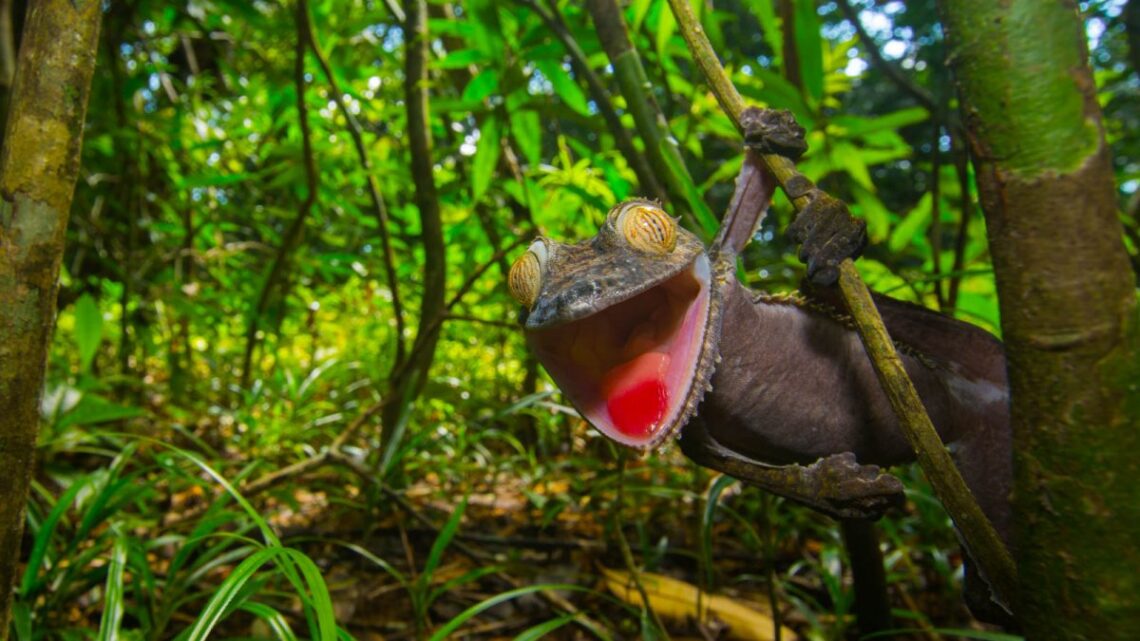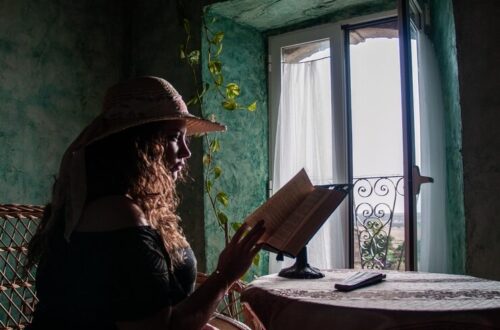Madagascar’s rainforests are like nowhere else on Earth—a living laboratory of evolution where 90% of the wildlife is found nowhere else. Picture this: I’m standing in a humid forest, the air thick with the calls of lemurs and the rustle of leaves, feeling like I’ve stepped into a prehistoric world. This island, isolated for 88 million years, hosts creatures so unique they seem plucked from a fantasy novel—think lemurs with eyes like saucers or chameleons that shift colors like mood rings. But these rainforests are under siege, with deforestation and climate change threatening their treasures. In this article, we’ll explore the extraordinary wildlife of Madagascar’s rainforests, the challenges they face, and how we can protect them. Let’s dive into this vibrant, fragile world and uncover why it’s worth saving.
The Unique Biodiversity of Madagascar’s Rainforests
Madagascar’s rainforests, particularly in the eastern region, are a global biodiversity hotspot, housing over 12,000 plant species and 1,314 native vertebrates, 90% of which are endemic. This isolation-driven evolution has created species like the fossa, a cat-like predator that hunts lemurs with ninja-like agility. But with 50% of forests now less than 100 meters from an edge, these species are at risk. Understanding this biodiversity is the first step to protecting it.
What Makes Madagascar’s Wildlife So Special?
Madagascar’s long isolation from other landmasses allowed species to evolve in unique ways, free from outside competition. For example, the island’s 110 lemur species, like the Critically Endangered ruffed lemur, exist nowhere else. This hyperdiversity makes Madagascar a critical focus for conservationists worldwide.
Key Species in the Rainforests
The rainforests teem with life, from tiny tenrecs to towering baobabs. Lemurs, like the Coquerel’s sifaka, leap through the canopy, while panther chameleons dazzle with color. Recent research highlights lizards as unsung heroes, dispersing seeds in degraded areas where lemurs struggle. Each species plays a role in the ecosystem’s delicate balance.
- Lemurs: Over 100 species, including the ring-tailed and black-and-white ruffed lemur.
- Fossa: Madagascar’s top predator, cathemeral and agile in trees.
- Chameleons: Over 80 species, like the Malagasy Giant Chameleon, vital for seed dispersal.
| Species | Role in Ecosystem | Conservation Status |
|---|---|---|
| Ruffed Lemur | Seed disperser, canopy dweller | Critically Endangered |
| Fossa | Top predator, controls lemur populations | Vulnerable |
| Panther Chameleon | Insect control, seed dispersal | Least Concern |
Threats to Madagascar’s Rainforest Wildlife
Deforestation, overharvesting, and climate change are hammering Madagascar’s rainforests. Since the 1950s, over 80% of the island’s forests have vanished, with 29–59% of ruffed lemur habitat projected to disappear by 2070. These threats don’t just endanger animals—they disrupt entire ecosystems, affecting human communities too.
Deforestation: The Silent Killer
Slash-and-burn agriculture and logging have reduced rainforests to fragments. Nearly 90% of plant species and 62.1% of vertebrates are impacted by these practices. For example, the Analanjirofo region’s forests, home to 22 lemur species, are shrinking fast, pushing species like the collared brown lemur to the brink.
Climate Change’s Growing Impact
Rising temperatures and shifting rainfall patterns threaten species like the ruffed lemur, whose habitat could shrink by 14–75% by 2070, per USGS studies. Droughts and storms further stress these ecosystems, making adaptation difficult for forest-dependent species.
Human-Wildlife Conflict
Local communities, often living in poverty, rely on forests for resources, leading to overexploitation. Hunting and the pet trade also threaten species like the panther chameleon, despite legal protections. Balancing human needs with conservation is a complex challenge.
Pros of Addressing Threats:
- Preserves biodiversity
- Supports ecotourism revenue
- Maintains ecosystem services like pollination
Cons:
- High financial costs
- Conflicts with local economic needs
- Requires long-term commitment
The Role of Lemurs in Madagascar’s Rainforests
The Heart of the Forest
Lemurs are the poster children of Madagascar’s rainforests, with 95% of species threatened with extinction. They disperse seeds, ensuring forest regeneration, but their decline—due to habitat loss—spells trouble for the ecosystem. The Coquerel’s sifaka, for instance, is a vital seed disperser but Critically Endangered.
Why Lemurs Matter
Lemurs like the black-and-white ruffed lemur maintain forest health by spreading seeds of over 60 plant species. Their loss could trigger a cascade of ecological decline, reducing fruit availability for other species. Protecting lemurs means protecting the forest itself.
Featured Snippet Opportunity: Why are lemurs important to Madagascar’s rainforests? Lemurs are key seed dispersers, ensuring forest regeneration by spreading plant seeds. Their decline threatens ecosystem stability, impacting plants and animals reliant on healthy forests.
The Surprising Role of Lizards
Unsung Heroes of Seed Dispersal
Recent research from Kyoto University reveals lizards, like the Malagasy Giant Chameleon, are critical seed dispersers, consuming fruits from over 20 plant species. Unlike lemurs, they thrive in degraded habitats, making them vital for forest restoration in areas hit hard by deforestation.
Lizards vs. Lemurs: A Comparison
While lemurs dominate as seed dispersers in healthy forests, lizards step up in fragmented areas. Their seed choices differ, with lizards favoring smaller fruits, complementing lemur diets. This adaptability makes them a lifeline for Madagascar’s recovering ecosystems.
- Lizards: Thrive in degraded areas, disperse smaller seeds.
- Lemurs:,支持用户
- Comparison:
- Lizards: Smaller range, resilient to habitat change.
- Lemurs: Larger range, forest-dependent.
| Animal | Seed Dispersal Range | Habitat Preference |
|---|---|---|
| Lizards | Short distances, small seeds | Degraded forests |
| Lemurs | Longer distances, larger seeds | Intact rainforests |
Conservation Efforts in Madagascar
Protected Areas: A Lifeline
Madagascar’s protected areas, covering 10.4% of the island, are critical for preserving biodiversity. Areas like Makira Natural Park shelter species like the fossa, with lower deforestation rates than unprotected zones. Strengthening these areas is key to survival.
Community-Based Conservation
Engaging local communities is vital. Programs like the Aspinall Foundation’s work with ruffed lemurs involve locals in reforestation, reducing human-wildlife conflict. These initiatives also provide income, aligning conservation with economic benefits.
Reforestation and Research
Reforestation projects, like those by the Madagascar Biodiversity Center, restore habitats while research, such as Timothy Eppley’s studies on lemur diets, informs conservation strategies. Citizen science and global partnerships amplify these efforts.
- Support protected areas: Donate to organizations like WWF.
- Join reforestation: Volunteer with groups like the Aspinall Foundation.
- Fund research: Support studies on species like the fossa.
Pros of Conservation:
- Saves endangered species
- Boosts ecotourism
- Supports local communities
Cons:
- Resource-intensive
- Slow results
- Requires global cooperation
How You Can Help Madagascar’s Wildlife
Taking Action from Afar
You don’t need to be in Madagascar to make a difference. Supporting organizations like the California Academy of Sciences or Wildlife Madagascar funds research and conservation. Simple actions, like reducing plastic use, also help by curbing global pollution.
Practical Tools for Conservation
Tools like iNaturalist allow you to contribute to global biodiversity databases, while eco-friendly products reduce environmental impact. For example, choosing FSC-certified wood supports sustainable forestry, preserving habitats indirectly.
- Donate: Support groups like the Nature Conservancy.
- Use apps: Report sightings via iNaturalist.
- Buy sustainable: Choose products that protect forests.
Featured Snippet Opportunity: How can I help protect Madagascar’s wildlife? You can donate to conservation organizations, use citizen science apps like iNaturalist, and buy sustainable products to reduce habitat destruction.
People Also Ask (PAA)
What animals live in Madagascar’s rainforests?
Madagascar’s rainforests host lemurs, fossa, chameleons, tenrecs, and over 12,000 plant species, with 90% being endemic. Key species include the ruffed lemur and Malagasy Giant Chameleon.
Why is Madagascar’s biodiversity so unique?
Madagascar’s 88 million years of isolation led to unique evolutionary paths, creating species like lemurs and fossa found nowhere else. This endemism makes it a biodiversity hotspot.
What are the main threats to Madagascar’s wildlife?
Deforestation, climate change, and overexploitation threaten wildlife. By 2070, up to 93% of ruffed lemur habitat could be lost due to these pressures.
Where can I find conservation programs for Madagascar?
Visit websites like wildlifemadagascar.org or calacademy.org for programs. Local groups and global NGOs like WWF offer opportunities to get involved.
What are the best tools for wildlife conservation?
Apps like eBird and iNaturalist, GPS trackers for research, and sustainable products like FSC-certified wood are effective tools for supporting conservation efforts.
FAQ Section
What is the most endangered animal in Madagascar’s rainforests?
The black-and-white ruffed lemur is among the most endangered, listed as Critically Endangered due to habitat loss and hunting.
How does deforestation affect Madagascar’s wildlife?
Deforestation destroys habitats, reducing food and shelter for species like lemurs and fossa. It also fragments ecosystems, hindering reproduction and survival.
Can lizards really help restore Madagascar’s forests?
Yes, lizards like the Malagasy Giant Chameleon disperse seeds in degraded areas, aiding forest regeneration where larger animals struggle.
How can I support lemur conservation?
Donate to organizations like the Aspinall Foundation, volunteer for reforestation projects, or advocate for policies protecting Madagascar’s forests.
Are there ecotourism options for seeing Madagascar’s wildlife?
Yes, ethical ecotourism through operators like Nature Tourism Madagascar offers guided tours to see lemurs and fossa while supporting conservation.
Conclusion: A Call to Protect Madagascar’s Rainforests
Madagascar’s rainforests are a treasure trove of life, from acrobatic lemurs to stealthy fossa, but they’re disappearing fast. I’ll never forget the thrill of learning about the panther chameleon’s color-changing magic—it’s a reminder of what we stand to lose. By supporting conservation, using sustainable products, and spreading awareness, you can help save this unique ecosystem. Start small—plant a tree, share a post, or donate to groups like WWF or Wildlife Madagascar. Together, we can ensure these rainforests—and their incredible wildlife—survive for future generations to marvel at.





